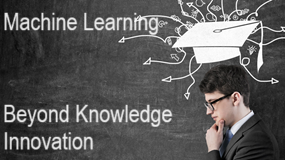Gradient Boosting is another ensemble learning technique used for classification and regression tasks and has its own specific way of building the ensemble of weak learners.
Here’s a brief overview of Gradient Boosting:
- Initialization: Gradient Boosting starts with an initial weak learner (usually a decision tree). It initially fits a model to the data and then calculates the residuals (the differences between the predicted and actual values).
- Sequential Model Building: Gradient Boosting builds a sequence of models, each of which corrects the errors of its predecessor. Each subsequent model focuses on learning the residuals (errors) of the previous model rather than adjusting the weights of misclassified examples.
- Learning from Residuals: In each iteration, a weak learner is trained to predict the residuals of the previous model. The new model is then added to the ensemble, and the predictions of all models are combined.
- Gradient Descent: Gradient Boosting minimizes a loss function (e.g., Mean Squared Error for regression or Log Loss for classification) by using gradient descent. It adjusts the parameters of each weak learner to minimize the loss function.
- Regularization: Gradient Boosting often employs regularization techniques to prevent overfitting, such as limiting the depth of the trees or applying shrinkage (learning rate) to the predictions of each weak learner.
Gradient Boosting typically produces more accurate models compared to AdaBoost but can be more computationally expensive and prone to overfitting, especially with deep trees. Popular implementations of Gradient Boosting include GradientBoostingClassifier and GradientBoostingRegressor in scikit-learn, as well as XGBoost, LightGBM, and CatBoost libraries, which are optimized versions with additional features and performance improvements.
from sklearn.datasets import make_classification
from sklearn.model_selection import train_test_split
from sklearn.ensemble import GradientBoostingClassifier
from sklearn.metrics import accuracy_score
# Generate a synthetic dataset for demonstration
X, y = make_classification(n_samples=1000, n_features=20, n_classes=2, random_state=42)
# Split the dataset into training and testing sets
X_train, X_test, y_train, y_test = train_test_split(X, y, test_size=0.2, random_state=42)
# Initialize the Gradient Boosting classifier
gb_clf = GradientBoostingClassifier(n_estimators=100, learning_rate=0.1, random_state=42)
# Train the Gradient Boosting classifier
gb_clf.fit(X_train, y_train)
# Make predictions on the test set
y_pred = gb_clf.predict(X_test)
# Evaluate accuracy
accuracy = accuracy_score(y_test, y_pred)
print("Accuracy:", accuracy)
Gradient Boosting algorithm tries to predict the residuals that have been given by the previous model and keeps on minimizing the residuals (i.e tries to make the residuals closer to 0) with each iteration of weak learners.

